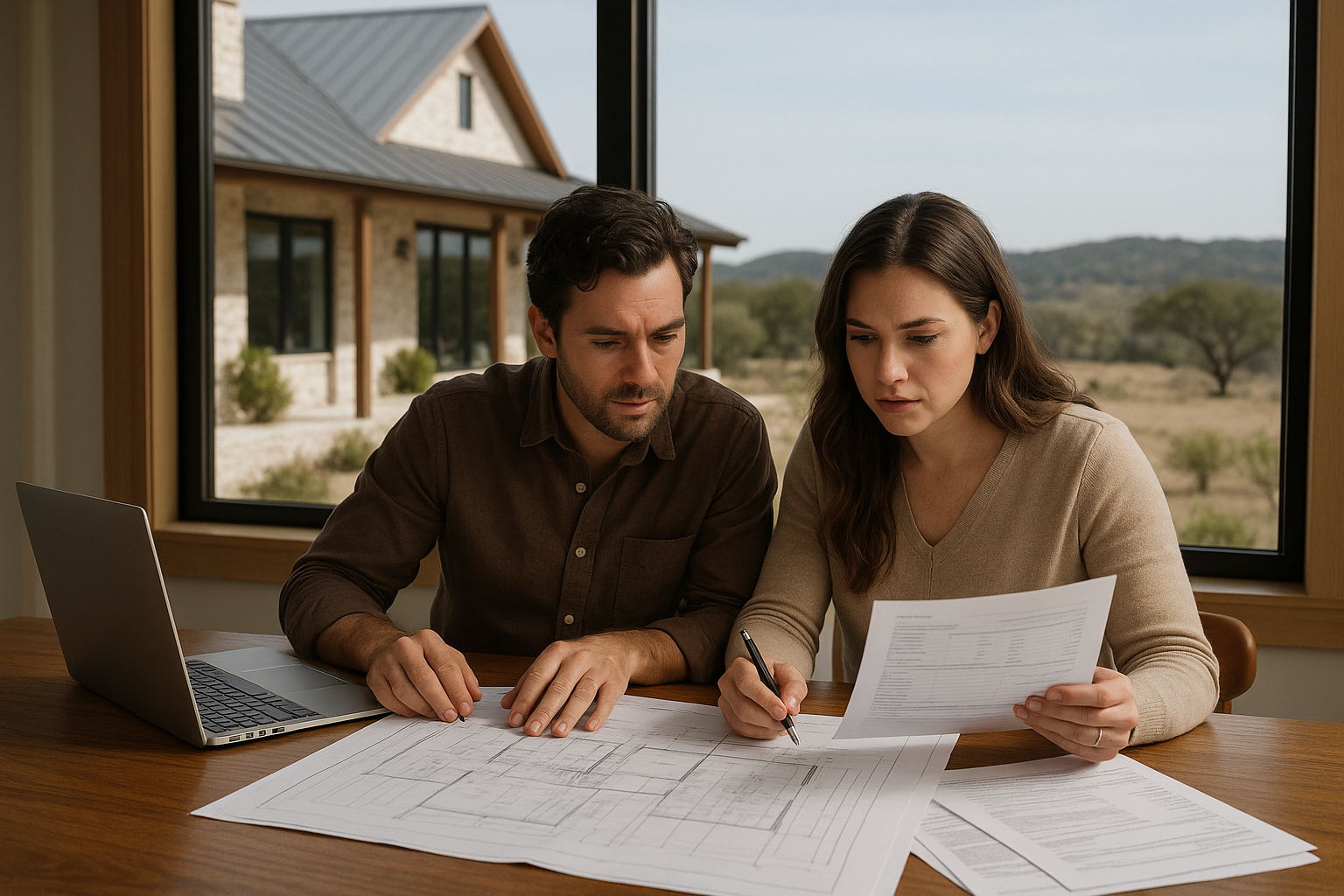Budgeting and Financing Your Custom Home Build in Texas


A comprehensive guide to budgeting and financing your Texas custom home build, including loans and closing tips.
Budgeting for lot, land prep, and all construction phases for a custom home in Texas
Building a custom home on your lot isn’t just about architectural blueprints and dream features—it’s about building financial confidence from the start. Before breaking ground, begin with a big-picture budgeting session. Meet with your builder to outline all expected costs, from land purchase and site work to permits, materials, labor, landscaping, fixtures, and finishes. Identify which expenses will happen up front (site purchase and testing), which at milestones (foundation, framing, completion), and which only accrue at closing (final builder payment, taxes, insurance, and title transfer fees). Modern custom home builders in Texas offer comprehensive pre-build consultations to clarify budgets, estimate allowances, and set realistic expectations. Use their online calculators or budget templates as a starting point, then adjust for your unique vision—are you going lux with outdoor kitchens and pools, or focusing on energy-efficient essentials? Research recent comparable projects for benchmarks on local costs per square foot, and talk to nearby homeowners about their surprises and budget-busters. Make sure to plan for the unexpected: labor shortages, material delays, code changes, and unplanned upgrades can all affect the bottom line. Once you’ve built your budget, it’s time to discuss construction financing. Many Texans partner with experienced home construction lenders who understand regional nuances (rural land regulations, municipal water/electric, windstorm requirements, etc.). Explore both fixed and variable loan options, check current interest rates, and ask about draws, closing terms, and loan-to-value guidelines. For more info, see New home construction loans in Texas.
Texas construction loans, mortgage options, budgeting, and down payment strategies
Navigating construction loans, traditional mortgages, and alternative financing is one of the most critical phases of building a custom home in Texas. Unlike conventional home purchases, where buyers generally secure a standard mortgage once the house is complete, new custom builds—especially those on your own lot—usually require a construction loan. A construction loan is a short-term, interest-only loan that provides funds in draws as milestones are reached (foundation, framing, completion, etc.). Once construction ends, many lenders offer a 'construction-to-permanent' loan, converting your debt to a traditional mortgage at closing. Understanding your options is key. Texas has a highly competitive lending market with banks, credit unions, and specialized home lenders vying for new construction projects. Research lenders who specifically advertise experience with Texas custom builds, as they are attuned to local market demands and unique land/homeownership requirements. Always request a full cost breakdown from your builder, including all construction line items and potential overruns. Budget for soft costs (design/engineering, permits, surveys, insurance, etc.) and allocate an emergency buffer (10–15%) above the builder’s base estimate. To build with financial confidence, familiarize yourself with down payment requirements (often 10–20% of total cost), how land equity can count toward your down payment if you already own your lot, and related tax implications. Seek builder recommendations or reviews for local lenders—they can flag which institutions are flexible, communicative, and excel at closing timely. Read about the basics at Financing rural and custom home builds in Texas and browse an in-depth step-by-step at Financing tips for first-time custom home builders.
Sourcing and qualifying lenders, estimating total costs, incentives, and closing tips
Securing the ideal loan is just the beginning—accurate budgeting unlocks peace of mind and prevents costly surprises. Itemize every potential expense, from site prep and foundation work to finishes, landscaping, furniture, and post-construction warranties. Include soft costs like engineering fees, soils testing, and utility hookups, often missed in estimates. Stay flexible and regularly review your spend versus plan as construction progresses. Ask your builder for monthly budget breakdowns and track all change orders closely. You may be eligible for Texas-specific incentives, grants, or low-interest products—especially for energy-efficient builds. Speak with your lender about local underwriting guidelines, Title 2 requirements, and closing timelines in the Texas Hill Country. Don’t forget to plan for closing costs (generally 2–5% of total loan), property taxes, and initial insurance payments. Before closing, review your final settlement statement thoroughly and clarify what you’ll owe on day one versus costs spread across the life of your mortgage. Finding the right lender and staying proactive with your budget will make the experience of moving into your dream home far more rewarding. For customization and closing tips, see How to finance a custom home in Texas and additional loan strategies at Guide to Texas construction loans.
.png?width=400&height=133&name=TRUE%20STONE%20LOGO%20(1).png)